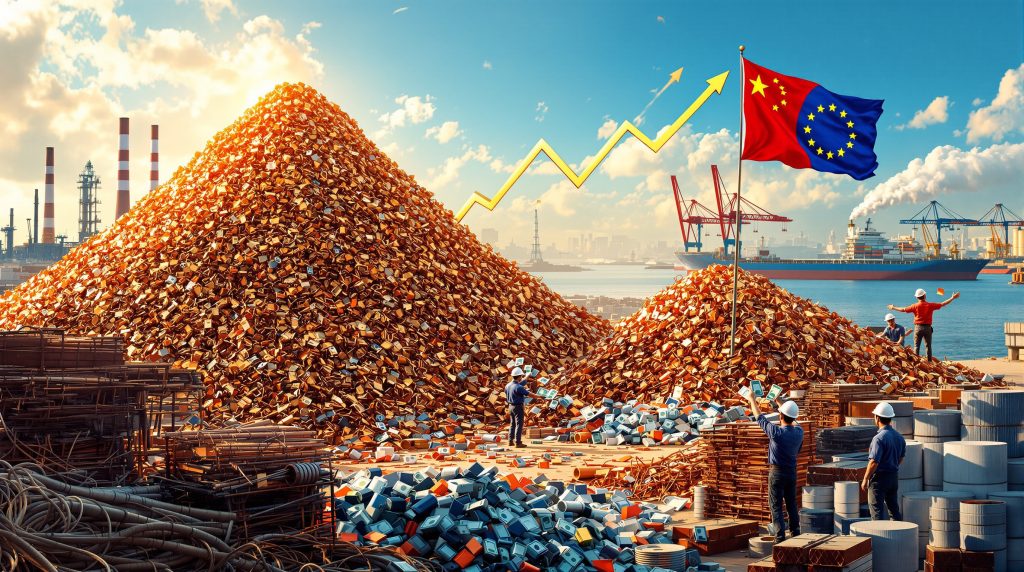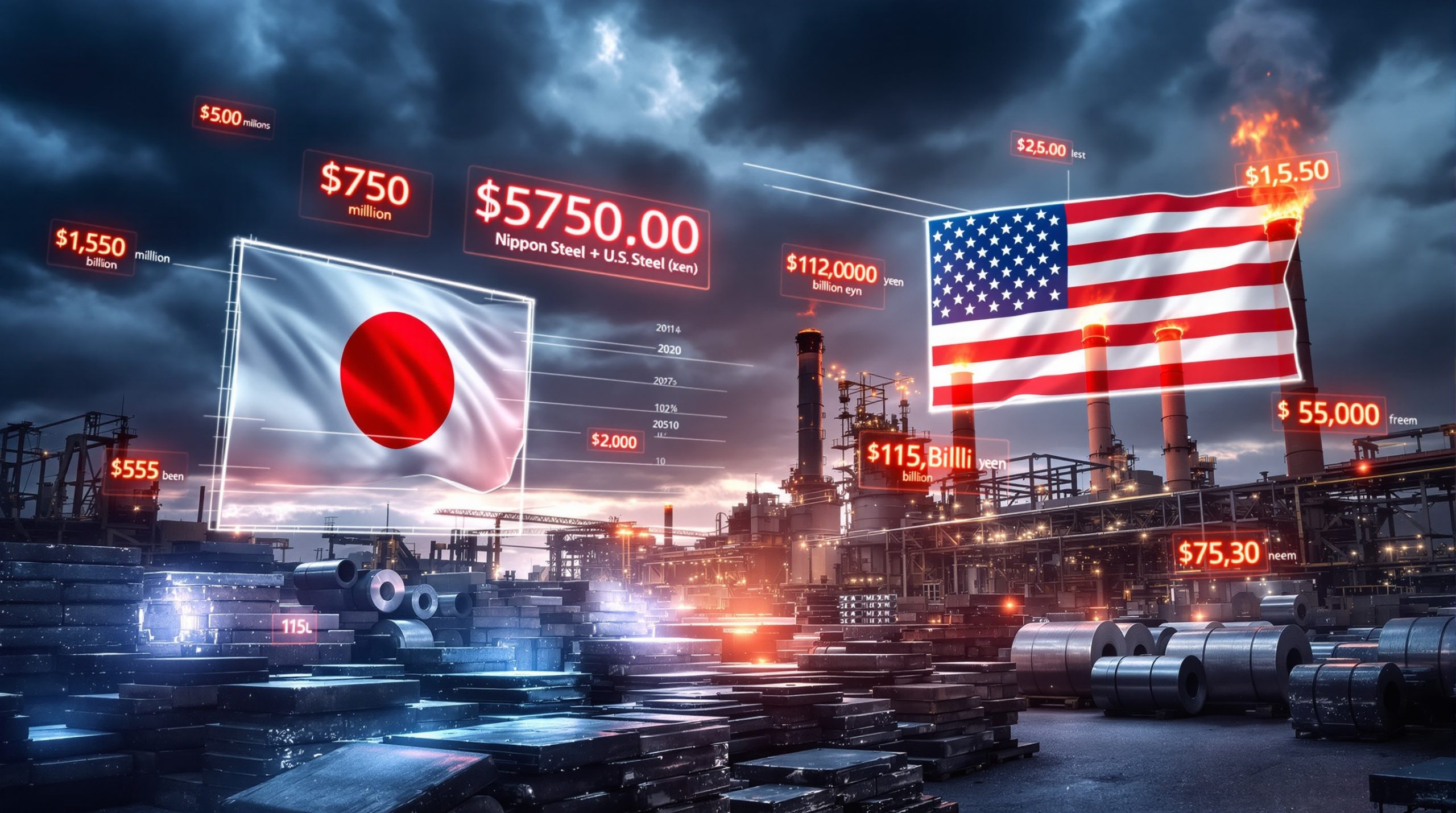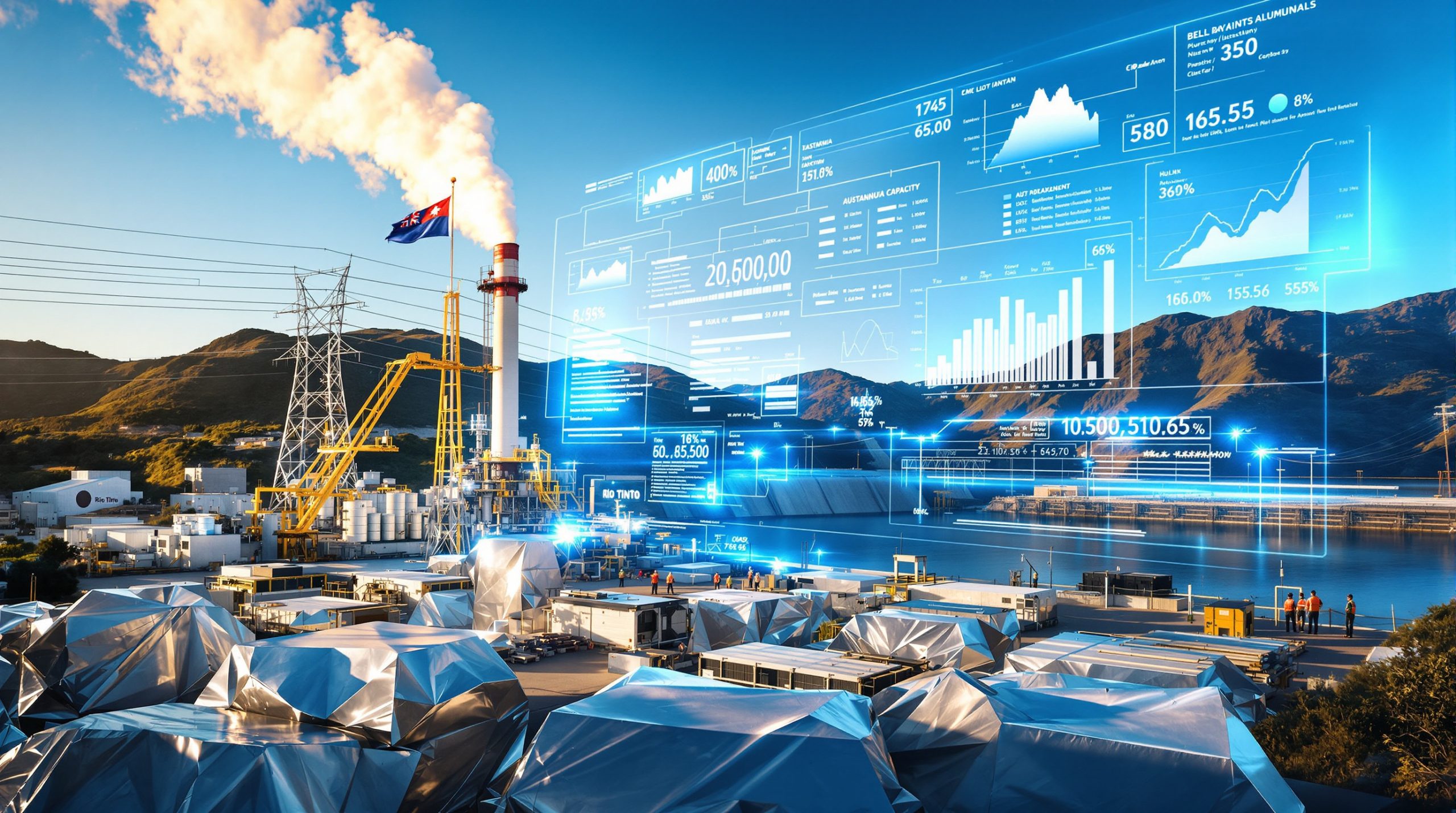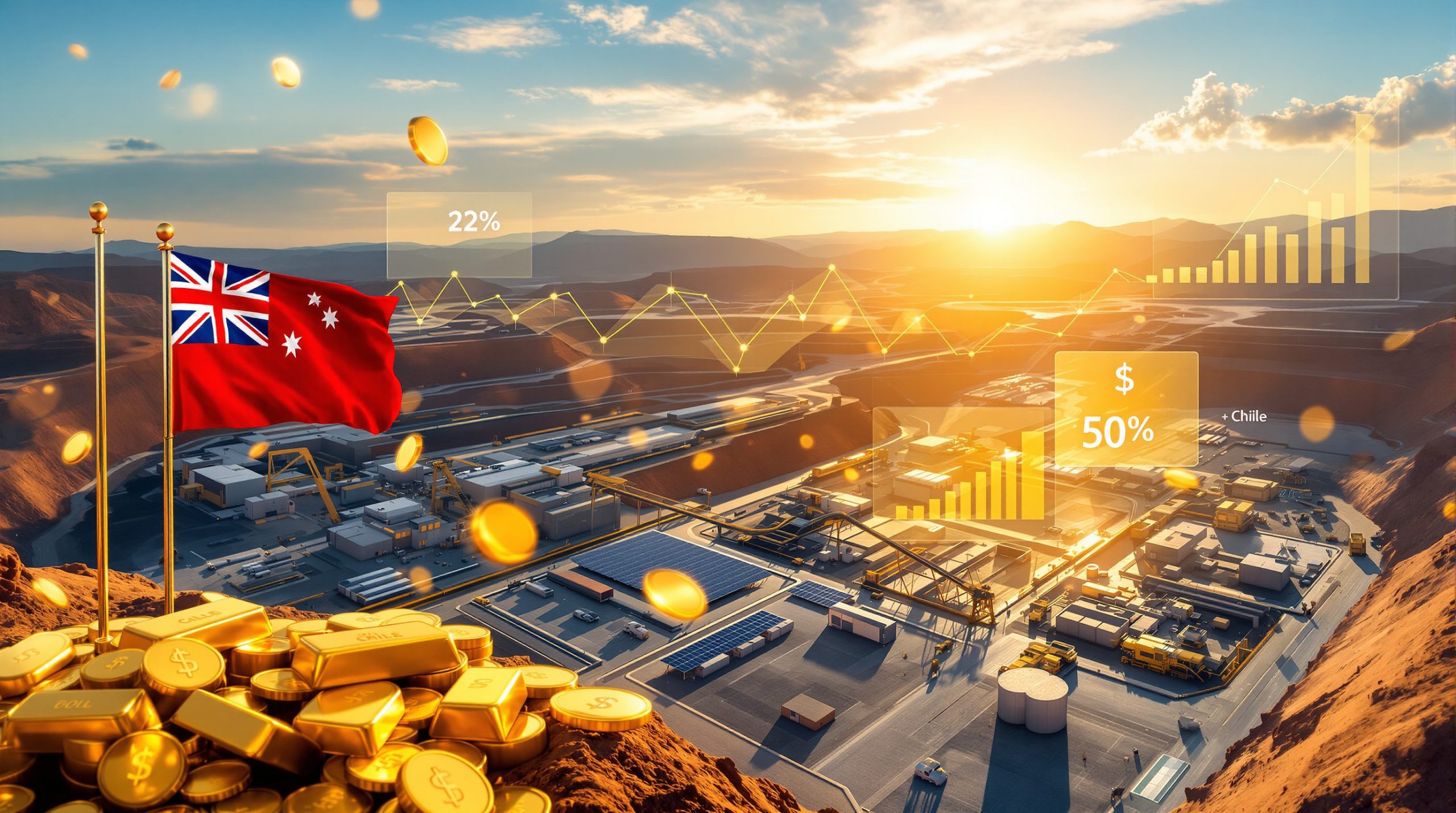European Copper Crisis: How China's Scrap Buying Threatens EU Smelters
China's aggressive purchasing of copper scrap has created significant supply challenges for European smelters, with German manufacturers particularly affected by raw material shortages. This market disruption represents a growing concern for European industrial policy and resource security in a critical metals sector.
The Scale of China's Copper Scrap Imports
European copper scrap exports reached record levels in 2023, with approximately 45% flowing directly to China, according to the European Commission's Raw Materials Information System (RMIS). In their 2023 report, the RMIS highlighted this dramatic shift in material flows, raising concerns about resource security.
In the first seven months of 2025, China imported about 204,000 tons of copper scrap from EU nations, a 3.5% increase year-over-year, based on official trade statistics. This continuing trend has exacerbated supply pressures within European markets.
Chinese buyers are consistently outbidding European smelters, creating domestic supply shortages that threaten industrial production. The London Metal Exchange (LME) copper price volatility, trading between $9,000-$10,000 per tonne throughout 2024-2025, has further complicated market dynamics.
Germany's Industrial Concerns
Large German copper smelters report critical raw material shortages due to Chinese purchasing power. Economy Minister Katherina Reiche explicitly stated that "Large German copper smelters are no longer getting any raw materials" due to Chinese purchasing activities, as reported by Bloomberg News in September 2025.
Minister Reiche has called for Europe-wide policies to prevent China from outbidding European buyers, suggesting this should be integrated into broader European economic resilience concepts.
The situation threatens Germany's manufacturing base, which relies heavily on copper for electrical and automotive applications. The German Copper Institute (Deutsches Kupferinstitut) has documented supply chain disruptions affecting both automotive and electrical industries, with potential ripple effects throughout the manufacturing sector.
Why Is Copper Scrap Suddenly So Strategic?
The Growing Value of Recycled Copper
Copper scrap represents a significantly lower-carbon alternative to primary mining, with the International Copper Association reporting that processing scrap requires approximately 85% less energy than extracting virgin copper. This dramatic efficiency difference makes recycled copper increasingly valuable as environmental regulations tighten.
The metal's perfect recyclability makes it a cornerstone of circular economy initiatives. According to the Copper Development Association, copper maintains its properties indefinitely through recycling processes, making it 100% recyclable without quality degradation.
Rising primary copper prices have made scrap increasingly economically attractive. As primary copper mining faces declining ore grades globally—with average grades falling from 1.6% in 1900 to approximately 0.6% today according to USGS data—the economic equation increasingly favors recycled material.
Global Supply Chain Pressures
Copper demand continues to rise due to electrification and renewable energy transitions. The International Energy Agency projects global copper demand to reach 30.1 million tonnes by 2030, up from 25.2 million tonnes in 2023—a significant increase driven largely by green technologies.
China's domestic smelters have ramped up production capacity, requiring more raw materials to maintain operations. This capacity expansion has intensified competition for finite scrap resources.
Traditional mining sources face increasing extraction costs and environmental restrictions. Chile's Codelco, the world's largest copper producer, has reported increasing production costs due to deeper mining requirements and declining ore grades.
Geopolitical tensions have disrupted normal trade war supply chains for raw materials, creating new supply chain vulnerabilities and redirecting material flows.
What Trade Dynamics Are Driving This Conflict?
US-China Trade Tensions Impact
Current US trade policies include significant tariffs on various Chinese goods, including copper products. These measures have reshaped global trade flows for copper scrap and other materials.
Some US metal dealers have begun redirecting China-bound shipments through third countries including Canada, Mexico, and Vietnam to avoid tariffs. This practice, while potentially effective for avoiding direct tariffs, carries significant compliance and legal risks.
These redirected shipments flow through alternative routes, creating complex supply chains that are difficult to monitor and regulate.
The collapse in direct US-to-China scrap shipments has intensified Chinese pressure on European supplies, creating a spillover effect that impacts EU smelters and manufacturers.
EU-China Trade Relations
The copper scrap issue adds to existing tensions between Brussels and Beijing, including concerns about Chinese electric vehicle exports and other industrial policies.
China's purchases from Europe represent about 15% of its total copper scrap imports, but their impact on European markets is disproportionate due to concentrated buying patterns and strategic targeting.
The situation highlights growing politicization of global commodities supplies, with resources increasingly viewed through a national security and industrial strategy lens rather than purely as market commodities.
WTO trade statistics confirm China remains the world's largest importer of copper-bearing materials, giving it significant market power and price-setting influence.
What Measures Is Europe Considering?
Current Regulatory Framework
The EU has activated a customs surveillance system to monitor metal scrap movements as part of broader resource security initiatives. According to the European Commission's DG TAXUD, these systems track approximately 200 material categories including copper scrap.
The Steel and Metal Action Plan (SMAP) adopted in 2025 emphasizes preserving scrap for EU industry, providing precedent for intervention in scrap metal markets.
Current regulations contain loopholes that allow continued exports despite strategic concerns, particularly in classification and customs procedures.
The European copper industry has urged closing these regulatory gaps through more comprehensive export controls and monitoring systems.
Proposed Policy Solutions
There are calls for a potential ban on scrap exports to certain non-OECD countries by 2027, similar to restrictions that exist for certain waste streams under the EU Waste Shipment Regulation.
Industry groups advocate for immediate restrictions on copper scrap exports to secure domestic supplies for European manufacturers.
Integration of scrap retention policies into the broader Critical Raw Materials Act, which already classifies copper among its 34 critical raw materials, could provide legal framework for export controls.
Enhanced monitoring of trade flows and potential countermeasures against market manipulation would provide more data-driven approaches to managing the issue.
How Does This Fit Into Europe's Strategic Autonomy Goals?
Resource Security Priorities
Copper is essential for Europe's green transition and digital infrastructure, with the EU's REPowerEU plan requiring an estimated 35% increase in copper demand for renewable energy infrastructure by 2030.
Domestic recycling capacity represents a more secure supply than import dependence, especially as the EU currently imports approximately 75% of its critical minerals.
Retaining scrap supports emissions reduction targets by lowering energy requirements for copper production, aligning with climate objectives.
The situation aligns with broader concerns about critical mineral dependencies that have become central to EU industrial strategy.
Industrial Policy Implications
Europe seeks to maintain competitive domestic manufacturing capabilities in strategically important sectors, including electrical equipment and renewable energy technologies.
Copper smelting represents high-value industrial activity with significant employment implications in several EU member states.
Loss of raw materials threatens downstream manufacturing that relies on copper inputs, potentially undermining industrial ecosystems.
The issue highlights tensions between free trade principles and strategic industrial needs that European policymakers must navigate.
What Are The Environmental Implications?
Carbon Footprint Considerations
Shipping scrap to China for processing increases transportation emissions, with maritime transport generating approximately 0.5-0.8 tonnes of CO2 per tonne of material transported, according to Maritime Transport Efficiency data from 2024.
European smelters typically operate under stricter environmental standards, including the EU Emissions Trading System and Industrial Emissions Directive, creating regulatory advantages for local processing.
Processing scrap locally supports EU's carbon reduction commitments by minimizing transport emissions and maximizing energy efficiency.
Circular economy principles favor local recycling over global material flows, creating closed-loop systems that minimize environmental impact.
Resource Efficiency Metrics
European copper recycling rates could decline without sufficient scrap inputs, undermining circular economy objectives.
Local processing creates closed-loop systems with lower environmental impact through reduced transportation and optimized material recovery.
China's processing may not achieve the same resource recovery efficiencies due to different environmental standards and process technologies.
Material leakage from Europe represents lost environmental benefits and increased carbon footprint for finished copper products.
What's Next For European Copper Scrap Policy?
Short-Term Interventions
Potential emergency measures to secure domestic supplies could include temporary export restrictions, similar to those implemented by France for certain strategic materials in 2023.
Enhanced monitoring and reporting requirements for scrap exporters would improve transparency and provide better data for policy decisions.
Industry-government partnerships to increase domestic scrap collection could help offset supply shortages.
Price support mechanisms for European smelters to compete with Chinese bids may be necessary to level the playing field.
Long-Term Strategic Approach
Integration of scrap retention into broader industrial strategy aligns with the EU's Green Deal Industrial Plan framework.
Investment in advanced recycling technologies to increase recovery rates would improve the efficiency of European operations.
Development of alternative copper sources, including urban mining from electronic waste and infrastructure, could supplement traditional scrap streams.
International coordination with like-minded partners on resource security would strengthen Europe's position in global markets.
How Might China Respond To European Restrictions?
Potential Chinese Countermeasures
Diversification of scrap sourcing from alternative regions, particularly developing nations with less regulated export controls, could offset European restrictions.
Increased investment in primary copper mining internationally has already been documented, with China increasing copper mining investments in Latin America by 40% since 2020 according to CEPAL data.
Acceleration of domestic scrap collection and processing is likely, given that China's domestic copper scrap generation is estimated at 2.3 million tonnes annually—insufficient for its smelting capacity.
Possible retaliatory trade measures against European exports could escalate tensions if export restrictions are implemented.
Diplomatic Considerations
The issue could become part of broader EU-China trade negotiations, potentially leading to compromise solutions.
China may argue against restrictions as protectionist measures that violate WTO principles of free trade.
Potential for compromise solutions that balance trade interests exists through quota systems or joint investment in recycling infrastructure.
Risk of escalation into wider resource nationalism conflicts remains a concern for both sides.
FAQ: European Copper Scrap Crisis
Why is copper scrap so valuable to China?
China's expanding manufacturing sector and ambitious renewable energy targets require substantial copper inputs. Scrap offers a cost-effective alternative to primary copper, especially as China's domestic smelting capacity has expanded significantly. The country's economic strategy emphasizes securing raw materials from global sources while developing domestic supply chains.
China's domestic copper scrap generation (approximately 2.3 million tonnes annually) falls significantly short of its processing capacity, creating structural import dependency.
Processing imported scrap provides better margins than refining primary ore for many Chinese operators, especially as global ore grades decline.
How does this affect copper prices globally?
The competition for scrap between European and Chinese buyers has contributed to price increases for recycled copper, with premium grades commanding 15-20% higher prices in 2024-2025 compared to previous years.
This price pressure flows through to finished copper products, affecting industries from construction to electronics manufacturing.
Market analysts project continued upward pressure on copper price predictions as competition for limited resources intensifies, particularly as electrification accelerates.
Price volatility has increased markedly, with day-to-day fluctuations creating challenges for manufacturers attempting to secure stable supply.
What alternatives do European smelters have?
European copper producers could increase primary copper imports, though this carries higher costs and environmental impact compared to scrap processing.
Investment in enhanced domestic scrap collection systems could improve capture rates, particularly from electronic waste streams that currently leak from formal recycling channels.
Development of new recycling technologies to process lower-grade materials could expand the available resource base.
Strategic partnerships with copper-producing nations could secure more stable supply lines, though implementation timeframes would be lengthy.
How does this issue connect to broader resource security concerns?
The copper scrap situation exemplifies growing global competition for critical minerals essential to economic and technological development.
Similar tensions exist around lithium, rare earths, and other strategic materials crucial for green technology deployment.
Nations increasingly view resource security through a geopolitical lens rather than purely economic considerations, changing the calculus for trade policy.
The issue highlights the complex intersection of environmental goals, industrial policy, and international trade that characterizes modern resource governance.
Balancing Trade and Strategic Interests
The growing conflict over copper scrap highlights the complex intersection of trade policy, resource security, and industrial strategy in a resource-constrained world. As Europe considers measures to protect its copper smelting industry from Chinese purchasing power, policymakers must balance immediate industry needs against broader trade relationships and international obligations.
The situation reflects a fundamental shift in how nations view raw materials—not merely as commodities subject to market forces, but as strategic assets essential to economic security and technological sovereignty. Europe's response to China's copper scrap acquisitions will likely serve as a template for addressing similar resource challenges across the critical minerals landscape.
For European industry, securing stable access to copper scrap represents both an immediate economic necessity and a long-term strategic imperative. How effectively the EU balances these considerations with its commitment to open markets will shape not only the future of its copper industry but also its broader approach to resource governance in an increasingly competitive global environment.
Decarbonisation in mining could help address some of these challenges by reducing the environmental impact of primary copper production. Additionally, developing more sophisticated unlocking copper investment strategies will be crucial for building resilience in European supply chains.
Want to Spot the Next Major Mineral Discovery Before the Market?
Discovery Alert's proprietary Discovery IQ model instantly notifies investors about significant ASX mineral discoveries, turning complex data into actionable trading opportunities. Visit the discoveries page to understand how historic mineral discoveries have generated substantial returns and begin your 30-day free trial today.




